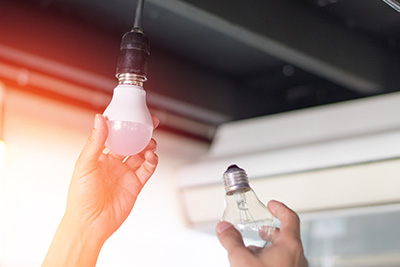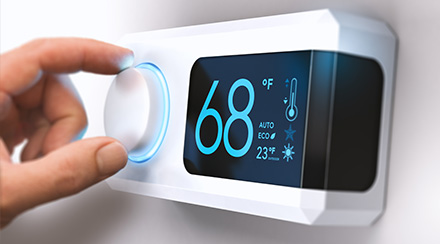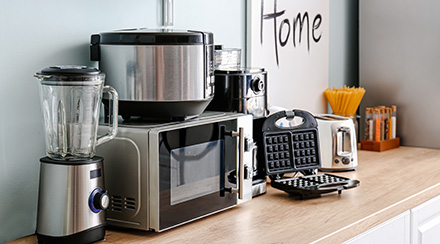Wattage of LED Bulbs: How Many Watts Does a Light Bulb Use?

When LED light bulbs first began appearing on store shelves, they were a hard bargain for many consumers. LEDs promised huge energy savings and a long lifespan, but at a high price – like $39.97 for one 60-watt-equivalent bulb when Philips Lighting introduced its AmbientLED bulb in 2011, the first LED bulb to qualify for an ENERGY STAR rating.
Things have changed considerably since then. The price of LED bulbs has dropped precipitously, with the Department of Energy reporting a nearly 90 percent reduction in the average price. The range of LED products and brands has also grown significantly, and LED bulbs are now the norm in millions of American homes, businesses and facilities. 47% of U.S. households reported using LEDs for most or all of their home lighting as of 2020.
So how much energy are we really saving by switching to LED bulbs?
Wattage of LED Light Bulbs
According to the U.S. Department of Energy, LED light bulbs use at least 75 percent less energy than incandescent bulbs. A typical LED light bulb uses about 10 watts, according to EnergySage, compared to about 60 watts for most incandescent bulbs.
The Energy Department also predicts that LED technology will account for the majority of all lighting by 2035, and that the annual energy savings by that time could reach 569 terawatt-hours, which is equal to the electricity output of 92 1,000-megawatt power plants.
Don’t Shop Based on Bulb Wattage

When incandescent light bulbs were the norm, we measured brightness in watts. The higher the wattage of a bulb, the brighter the light. But now that we’re using LED bulbs with such a low and limited range of wattages, we need a different unit of measurement to compare brightness: the lumen.
Lumens are to light what decibels are to sound – and lumen counts have nothing to do with wattage. To replace a 100-watt incandescent bulb with an LED, you’ll want a bulb that produces roughly 1,600 lumens. For a 75-watt bulb, 1,100 lumens is a comparable output, followed by about 800 lumens for a 60-watt bulb and 450 lumens for a 40-watt bulb.
To help consumers compare and choose light bulbs, the Federal Trade Commission requires light bulb manufacturers to print a lighting facts label on their packaging. This label will show you the bulb’s brightness in lumens, the wattage, the estimated annual energy costs and the estimated lifespan of the bulb. It will also show you where the bulb falls on the spectrum between cool and warm light, with cooler lights appearing brighter and sometimes blue-tinted, and warmer lights appearing softer and more yellow.
Beyond LED Bulb Wattage
Lower wattage isn’t the only way switching to LED bulbs can help you conserve. As mentioned above, LED bulbs last longer – up to 25 times longer, according to the Department of Energy. That means fewer light bulbs end up in landfills, and it also means fewer bulbs need to be shipped, which further reduces the carbon footprint of our lighting.
LED bulbs also produce much less heat than incandescent bulbs, which can help reduce the strain on air conditioning in the warmer months. And LEDs are not only more efficient in their use of electricity, they’re more efficient in their use of light. LED light bulbs are highly directional, whereas incandescent bulbs cast light in every direction. You’ll need to use a reflector when using an incandescent bulb for a directional spotlight or accent light, and this will absorb some of the light – but with an LED, you can direct all of the light energy exactly where you need it.
More Ways to Conserve Energy

Looking for Something Specific?
Select a category to find resources for topics that interest you.
Select Category

Related Articles:

Tips for Improving Your AC and Furnace Efficiency
We share maintenance tips for your heater and AC, and home improvement tips to help you use those systems less.
Read Article
Tips for Saving on Energy in Your Home
If you’re looking to learn more about energy efficiency for home systems and appliances, we’re sharing our favorite energy-saving tips.
Read Article
What Uses the Most Electricity In a Home?
We break down what uses the most energy in your home to give you an understanding of where your energy usage goes and where energy-saving tactics can make the most impact.
Read ArticleWattage of LED Bulbs: How Many Watts Does a Light Bulb Use?
When LED light bulbs first began appearing on store shelves, they were a hard bargain for many consumers. LEDs promised huge energy savings and a long lifespan, but at a high price – like $39.97 for one 60-watt-equivalent bulb when Philips Lighting introduced its AmbientLED bulb in 2011, the first LED bulb to qualify for an ENERGY STAR rating.
Things have changed considerably since then. The price of LED bulbs has dropped precipitously, with the Department of Energy reporting a nearly 90 percent reduction in the average price. The range of LED products and brands has also grown significantly, and LED bulbs are now the norm in millions of American homes, businesses and facilities. 47% of U.S. households reported using LEDs for most or all of their home lighting as of 2020.
So how much energy are we really saving by switching to LED bulbs?
Wattage of LED Light Bulbs
According to the U.S. Department of Energy, LED light bulbs use at least 75 percent less energy than incandescent bulbs. A typical LED light bulb uses about 10 watts, according to EnergySage, compared to about 60 watts for most incandescent bulbs.
The Energy Department also predicts that LED technology will account for the majority of all lighting by 2035, and that the annual energy savings by that time could reach 569 terawatt-hours, which is equal to the electricity output of 92 1,000-megawatt power plants.
Don’t Shop Based on Bulb Wattage
When incandescent light bulbs were the norm, we measured brightness in watts. The higher the wattage of a bulb, the brighter the light. But now that we’re using LED bulbs with such a low and limited range of wattages, we need a different unit of measurement to compare brightness: the lumen.
Lumens are to light what decibels are to sound – and lumen counts have nothing to do with wattage. To replace a 100-watt incandescent bulb with an LED, you’ll want a bulb that produces roughly 1,600 lumens. For a 75-watt bulb, 1,100 lumens is a comparable output, followed by about 800 lumens for a 60-watt bulb and 450 lumens for a 40-watt bulb.
To help consumers compare and choose light bulbs, the Federal Trade Commission requires light bulb manufacturers to print a lighting facts label on their packaging. This label will show you the bulb’s brightness in lumens, the wattage, the estimated annual energy costs and the estimated lifespan of the bulb. It will also show you where the bulb falls on the spectrum between cool and warm light, with cooler lights appearing brighter and sometimes blue-tinted, and warmer lights appearing softer and more yellow.
Beyond LED Bulb Wattage
Lower wattage isn’t the only way switching to LED bulbs can help you conserve. As mentioned above, LED bulbs last longer – up to 25 times longer, according to the Department of Energy. That means fewer light bulbs end up in landfills, and it also means fewer bulbs need to be shipped, which further reduces the carbon footprint of our lighting.
LED bulbs also produce much less heat than incandescent bulbs, which can help reduce the strain on air conditioning in the warmer months. And LEDs are not only more efficient in their use of electricity, they’re more efficient in their use of light. LED light bulbs are highly directional, whereas incandescent bulbs cast light in every direction. You’ll need to use a reflector when using an incandescent bulb for a directional spotlight or accent light, and this will absorb some of the light – but with an LED, you can direct all of the light energy exactly where you need it.
More Ways to Conserve Energy
Looking for Something Specific?
Select a category to find resources for topics that interest you.
Select Category

Related Articles:

Tips for Improving Your AC and Furnace Efficiency
We share maintenance tips for your heater and AC, and home improvement tips to help you use those systems less.
Read Article
Tips for Saving on Energy in Your Home
If you’re looking to learn more about energy efficiency for home systems and appliances, we’re sharing our favorite energy-saving tips.
Read Article
What Uses the Most Electricity In a Home?
We break down what uses the most energy in your home to give you an understanding of where your energy usage goes and where energy-saving tactics can make the most impact.
Read Article






